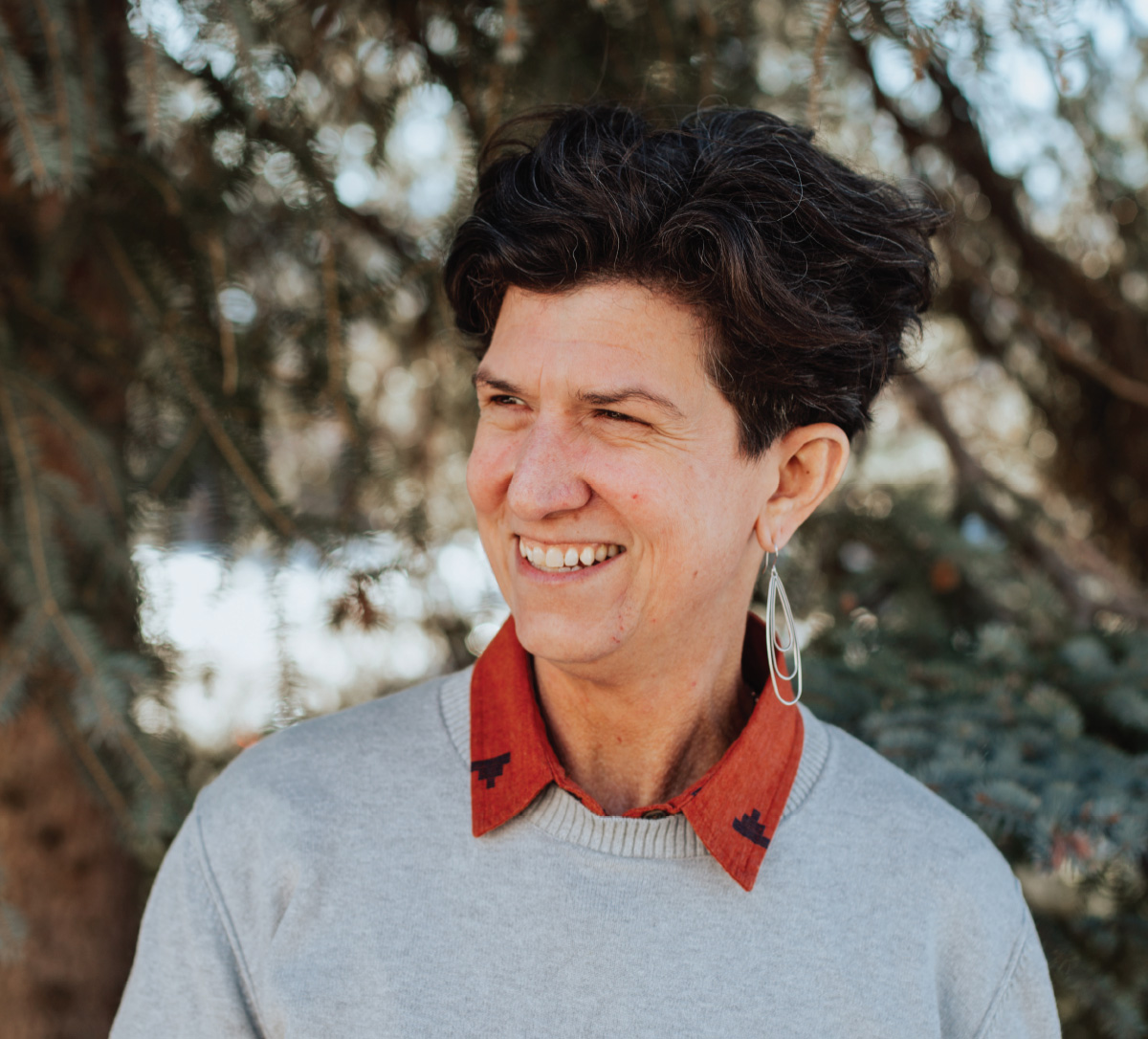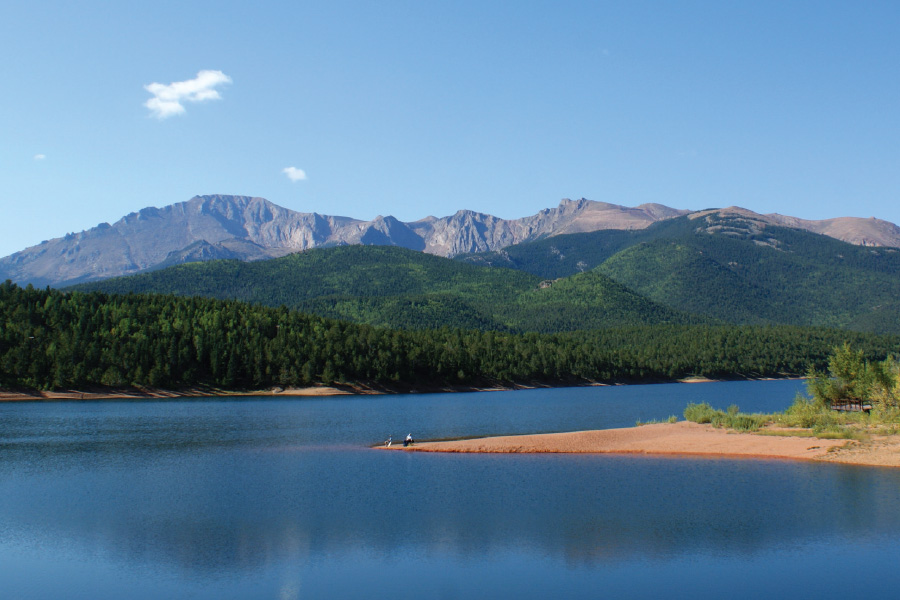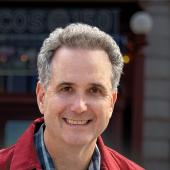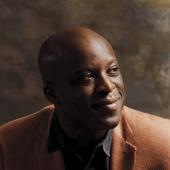Our Closest Companion
It’s early morning, you’re cozy, lying in bed. The orange sun starts to warm your bedroom. You cherish those last five minutes before your alarm pulls you up; It’s time to start your day. So what’s the very first thing you do? Take a sip of water? Or head to the bathroom? After a long night, your faucet delivers the water to brush your teeth and wash your face. Then you might use the toilet or warm up in the shower. You’ll actually spend most of your day interacting with water in some way.
According to Water and Wastewater Utility Charges and Practices in Colorado by the Colorado Municipal League, our morning bathroom routine already makes up for about 37% of all home water usage. By the time you’re out of the shower, your sprinkler might be finishing up its morning cycle. Alone, the sprinkler system uses over 50% of a single-family home’s daily water. Then, you may pour a cup of coffee, make some breakfast, and wash the dishes, using water all along the way. Paying attention to the amount of water we use before we even leave the house outlines the precedence it takes in our lives. With this enormous use, challenged by minimal lakes and a depleting river system in El Paso County and Colorado at large, it begs the question: Do we know where our water comes from?
“We can’t see our water,” says Amy McCoy of AMP Insights. Speaking to her really opened my eyes to the water issues we face in Colorado. Amy, who’s been an environmentalist since childhood, has been working in the field of water and climate policy for 20 years. She focuses her attention on the Colorado and Rio Grande river basins. She is especially interested in the connection between humans and water and how population growth along the Front Range jeopardizes our ability to efficiently use our limited water.

Her statement, “we can’t see our water,” boils down to this: All the pipes and waterways are hidden in our homes and cities. They are hidden behind our walls and under our streets, like they aren’t meant to be seen or even thought about. So when someone wonders where the water comes from, the easiest answer is usually “the sink.”
Unsurprisingly, it’s not as easy as that. In fact, it’s exponentially more challenging. The Colorado Water Development Study conducted by the Colorado Farm Bureau in 1997 states, “The location of the state’s water supply is in direct contrast to the location of consumptive use in the state, with approximately 25% [of consumptive use] located west of the Continental Divide and 75% located east.” Of the water that falls in Colorado yearly, only 13% flows to the east. This contrast between available water and water use on the Eastern Front Range of Colorado forced the state to take action and build 24 Transmountain Diversions.
Real quick, before you move on, answer me this: did you actually read that last paragraph? Or just skim it? Even writing it, I feel bored, confused, and ready to give up. The technical terminology behind water is complicated and nearly impossible to understand unless you’ve been doing it for years. Like, what does Transmountain Diversion even mean?
“Now, how much does that not tell you anything about what it actually is?” Amy expressed. “The language of water is largely inaccessible to people, but the reality of water is everything …when things are very technical, our default is to talk about them in unemotional ways.” Being unable to talk about issues like climate change and water in emotional ways can make them unrelatable. So, from now on, I’ll be using simple language and terms to help you (and myself) understand water and our relationship to it and to get the most out of this article. I’ll pick up right where we left off.
In the most basic terms, we pump 87% of our water from the Colorado River, sending it all the way over the Rockies (this is a Transmountain Diversion) to meet up with waterways, streams, and reservoirs that supply the water for our homes and businesses. The rest of the water comes from the Denver Basin groundwater and the Arkansas River, which is heavily over-tapped as it is, according to Amy. With this knowledge, it becomes clear that a significant amount of work goes into getting the water we use within seconds of waking up. As cities expand and add more neighborhoods, there comes a problem with the use of this finite resource.
“It’s not to say that we don’t have water–we do,” Amy assured me. “The scare tactics in conversations about water bring this ‘the sky is falling!’ mentality, like ‘we’re running out of water!’…but let’s flip the coin. Let’s say we have water. It may be less than we want, but it’s there. So how do we use it?”
This question is at the heart of the water issues we face. How do we use our water? And how can our understanding of that inform our actions?
“Can I go on a tangent?” Amy asked, and I obliged. “The ancient structure of water distribution in Iran is totally fascinating.” She went on to explain what a “Qanat” is, something that I knew would need additional research when I got home. Basically, a Qanat is an underground canal that starts from a high-elevation source and flows water slowly downhill to communities and farms, which uses the power of gravity to distribute the water. The water is then sectioned off, and streets and homes are constructed directly next to the canals. While a Qanat flexed some incredible engineering back in 3,000 BCE, this wasn’t Amy’s point. Instead, it was this: The Persians (who lived in present-day Iran) were directly connected to their water, which informed how they built and lived in their communities. They even used a water clock, which told them how much water each home or farm would receive. “So everybody knew exactly what they could do with that amount of water.”

We can learn a lot from these Qanats and the people that used them. At home, we don’t see how much water our house receives and how much we use on a daily basis. On the other hand, if we knew how much water we got every day, we would know exactly what to use it on. “We don’t correlate a volume of water with what we can do with it because [we think] water is reasonably unlimited to us at the moment,” Amy said. This “tangent” that Amy took me on allowed me to see how she views our relationship with water.
“Water is our closest companion,” she said.
For us, water is so involved in everyday life. We drink it when we wake up; we use it to bathe ourselves, our dishes, and our clothes. We cook and grow plants with it. You’re probably drinking water right now, or at least have your water bottle nearby! We really are linked hand in hand with water, and it directly affects nearly everything in our daily lives.
Ultimately, it shakes down to awareness. We need to take the time to analyze our own daily uses of water. Look at how you wash the dishes or water your lawn. How long do you leave the water on? Once we start to focus on our usage, we can then shift our energy toward taking action. You could turn off the sink between rinsing dishes or landscape your yard to contain native plants and scenery that can withstand our dry, arid environment. To become more involved with our water, we can also take our knowledge to the polls.
“It’s advocating to [and voting for] your County Commissioners and City Council and other water authorities to make wise water policies,” Nancy Henjum, our District 5 City Councilwoman, said as we discussed her recent efforts to help the city make smart decisions when it comes to water. The City Council is the board of directors for Colorado Springs Utilities as well, who ultimately controls our water.
Nancy, along with the City Council, recently voted in a 5-4 decision to approve the Extension of Water Services Ordinance. “The city has to maintain 128% of available water before we can consider any annexations,” she explained. As Colorado Springs continues to grow and looks towards including new developments, this is a step to ensure the security of the water we already have.
Everyone understands the concept of planning for retirement. We set aside present resources or delay current plans to ensure that our retirement years will be livable. The same idea works with water conservation. This initiative both protects our water and ensures the future success of planned developments.
Dave Donelson of Colorado Springs City Council, who voted against the water ordinance, said in a recent opinion statement to the Gazette, “Many citizens are understandably concerned about the reliability of our water supply and are concerned that very soon we may essentially ‘run out’ of water. For that reason, you may feel that we had to do something fast, and at least this was something. While this is understandable among citizens who are not constantly focused on these issues, our city leaders should know better…Colorado Springs’ water usage is the same now as it was 30 years ago - about 72,000 acre-feet/yr. The growth we have experienced in our city has not resulted in higher amounts of water usage. We use water more wisely now. That trend will continue. Growth does not mean we run out of water.”
This statement mirrors Amy’s words: we aren’t in immediate danger of running out of water. Dave states he voted ‘NO’ on the ordinance with the impression that the City Council needs to look further into the issue before making a decision. Donelson felt that the right thing to do was vote “against a water ordinance whose impact on the cost of housing, increased density throughout our city, quality of life, and development surrounding Colorado Springs, has not been studied and is not understood.” While there is no perfect answer to water usage in our city, it seems that both sides are still looking out for the best interest of our citizens. The passing of the ordinance will at least allow Colorado Springs to look out for itself when it comes to water usage and be more careful in consideration of annexations in the future.
Talking with both Nancy and Amy and reading the statement from Dave, I got the sense that the individuals in charge of making decisions for Colorado Springs are passionate about its healthy growth but want everyone to be aware of the realities we are facing. Nancy concludes: “I’d like people to walk away understanding that the decisions that we are making about development in the city and the county are being done by two separate legislative bodies. Colorado Springs and El Paso County draw from two different sources of water, one is renewable and the other is not. If the county runs out of water, they will come to the city to provide the water, and that carries an inherent question: shouldn’t we have a strategy in place to address the availability of water? A regional water task force is being formed to gather and analyze existing data from the region to make policy recommendations to the governing bodies for the sake of water sufficiency for the whole region. We want to make sure that, regardless of whether you are city or county, your water needs will be met.”





